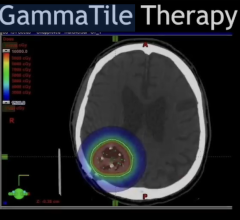February 23, 2012 — A new look at the three most highly regarded prostate cancer treatment options is the first of its kind to consider long-term cost and quality of life post-treatment. Researchers at the Cleveland Clinic found prostatectomy surgery and brachytherapy to be less expensive and less toxic than external beam radiation or radiotherapy.
The close to 250,000 men diagnosed with prostate cancer in the United States each year face the challenge of selecting the right course of treatment and best specialist for a disease that may or may not turn aggressive. For men who choose to face diagnosis head-on, three primary treatment options are most recommended for low- to moderate-risk prostate cancer. Radiation targeting the cancerous tissue of the prostate is available through external beam or internal seed implantation. The third choice, prostatectomy surgery, is used to remove the cancerous prostate entirely, through traditional, laparoscopic, or less-invasive robotic surgery.
In this study all three modalities were evaluated using Medicare data for close to 140,000 prostate cancer patients over age 65. The long-term data indicated more favorable results with prostatectomy surgery and brachytherapy. David Samadi, M.D., vice chairman of the department of urology and chief of robotics and minimally invasive surgery at The Mount Sinai Medical Center, believes the significant benefits of robotic prostatectomy outweigh radiation – both internal and external.
Having performed over 3,800 successful robotic prostatectomy procedures, he prefers robotic surgery as a first-line approach to prostate cancer for several reasons. "First," he explains, "robotic prostatectomy is the only procedure that completely removes the cancerous prostate. Second, the minimally invasive procedure allows for excellent visibility. Very little blood clouds the surgical field and I introduce CO2 gas to create room in the abdomen for the robotic tools to expertly access the prostate and carefully maneuver around the delicate surrounding tissue and nerve bundles."
The side effects of external beam radiation contributed to its less favorable outcome in this study. Samadi discussed the additional benefits of robotic prostatectomy surgery, "prostate cancer patients treated with my SMART surgery technique [Samadi Modified Advanced Robotic Technique] have a 97 percent cancer cure rate. SMART surgery is a highly accurate procedure with limited side effects. 96 percent of my patients regain urinary control and 85 percent regain sexual function within a short time after surgery. Surgical precision enables such positive outcomes."
Among patients in the study, external beam radiation, the most costly of the choices, resulted in the highest rates of urinary bleeding, scarring, and gastrointestinal issues.
Most of Samadi's patients achieve a zero PSA level by six weeks post- surgery. However, in patients where trace amounts of cancer are still detected, radiation is a strong secondary treatment option. "Radiation certainly has its role in the fight against prostate cancer. I believe that removing the cancerous prostate is the best first course of action, but should microscopic elements of prostate cancer remain, low-dose radiation is highly effective."
If patients choose radiation as their first course of prostate cancer treatment, follow-up procedures are limited. Should the prostate cancer return or remain following radiation, for example, prostatectomy surgery becomes more complicated and riskier.
For more information: www.smart-surgery.com


 May 02, 2024
May 02, 2024 








